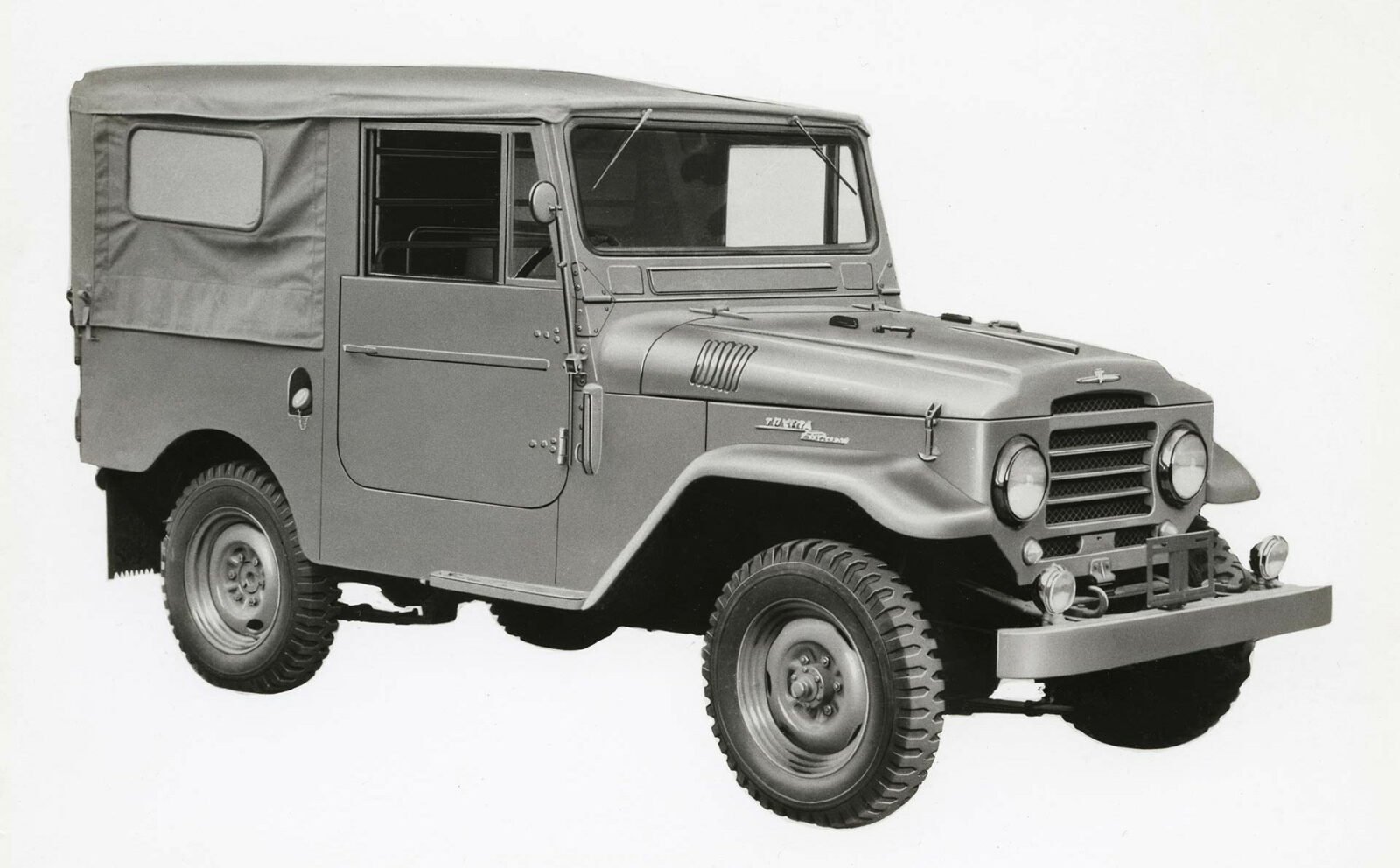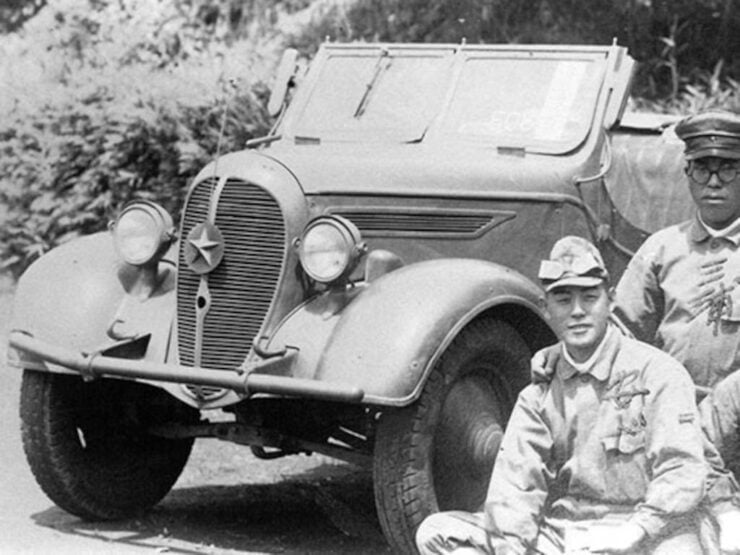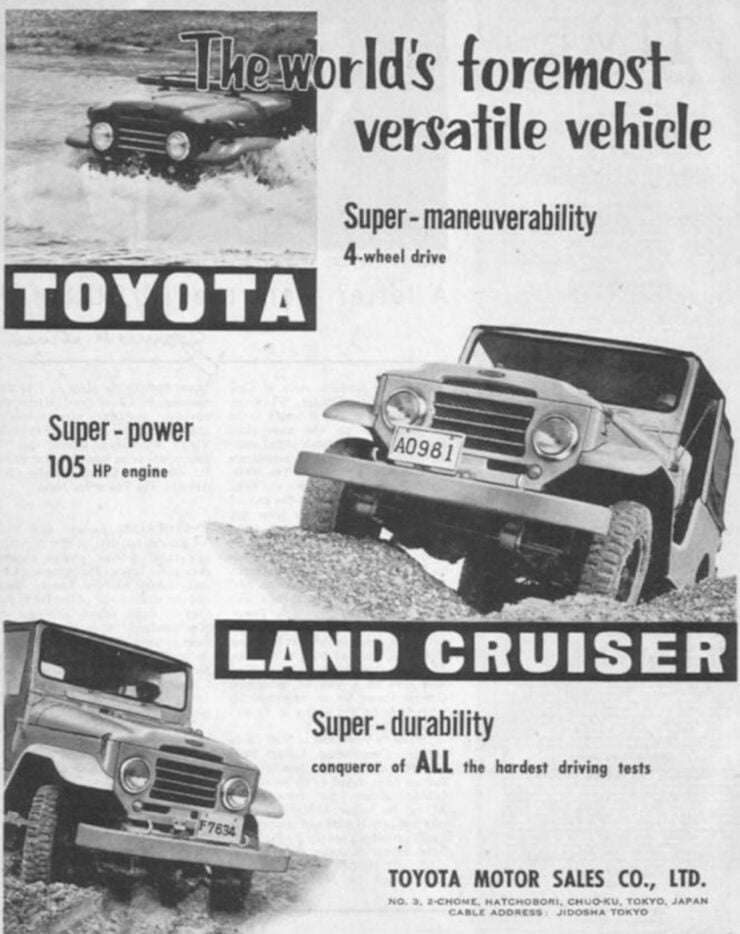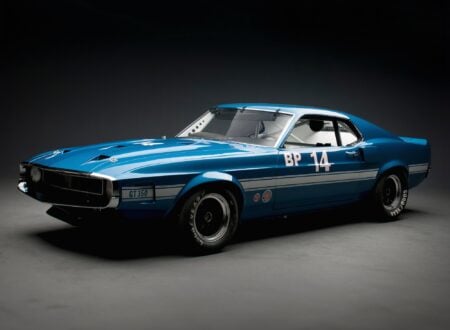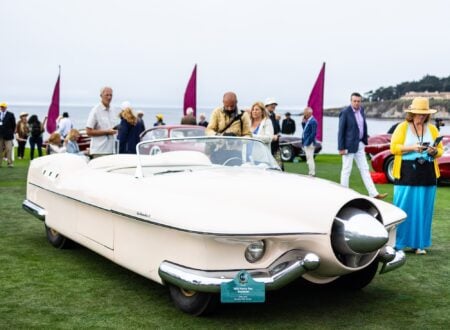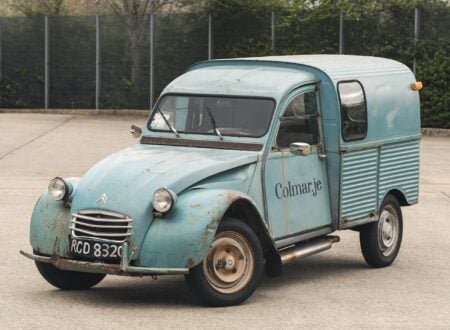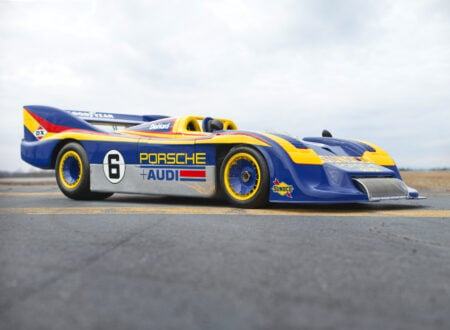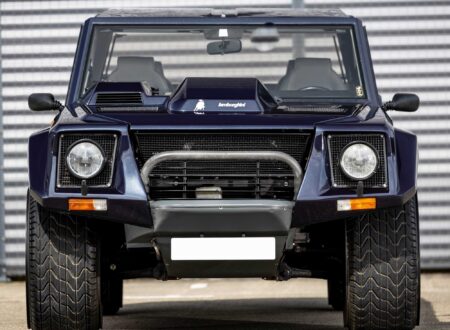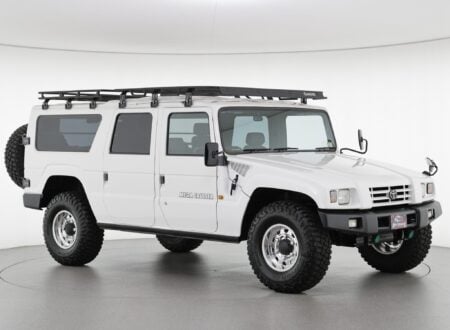The Jeep, which began as a design by American Bantam, has been the foundational design for many of the four-wheel-drive vehicles that followed after it. Among the four-wheel-drive vehicles the Jeep effectively birthed are the Land Rover, and its arch rival from Japan, the Toyota Land Cruiser.
Prior to becoming acquainted with a Jeep the Japanese military had a four-wheel-drive car, the Kurogane Type 95, but once they had their hands on a Jeep the shortcomings of the Kurogane became obvious – and Japan was on the way to the creation of what many would argue, was one of the best four-wheel-drives in history
Fast Facts – The Toyota Land Cruiser 20 Series
- The heritage for the vehicle that would become the Toyota Land Cruiser: the 20, 30 and 40 Series, was the American Bantam BRC 40. This was the vehicle that served as the foundation for the Jeep, and then the Jeep served as the foundational inspiration for both the British Land Rover, and the Japanese Toyota Land Cruiser.
- The Land Cruiser was originally called the Toyota “Jeep” simply because the word “Jeep” had become the noun used to describe any small Jeep like vehicle. But Willys were a bit irritated by that and let Toyota know of their annoyance. The Japanese are typically polite and courteous people and so they adopted the name Land Cruiser for their Jeep-like vehicles. The name Land Cruiser was directly influenced by the British Land Rover, and was about as close to it as they could come without the threat of litigation.
- The Toyota vehicles that formed the Land Cruiser’s ancestry included the AK10, BJ, FJ, and then the 20 and short lived 30 Series, which were the first Toyota vehicles to wear the Land Cruiser name.
- The globally iconic Toyota Land Cruiser 40 Series was closely based on the 20 Series and can be generally thought of as an improved 20 Series.
The First Japanese Four Wheel Drives
The first Japanese light four-wheel-drive military reconnaissance car was not at all like a Jeep. It was the Kurogane Type 95 and it was basically a front-engine small four-wheel-drive convertible powered by an air-cooled V-twin gasoline engine beginning at 1.2 liters, and progressing to 1.3 litres and then 1.4 litres in later versions.
The Kurogane Type 95 has the distinction of having been the first Japanese-designed production four-wheel-drive reconnaissance car. But despite the Kurogane Type 95’s groundbreaking pedigree, it turned out that when Japanese troops in the Philippines campaign came across an American Jeep they immediately recognized its superiority.
That Jeep was promptly sent to Japan most likely with a polite request from the military suggesting that Japanese industry could make a Japanese version for the war effort. They say that imitation is the greatest form of flattery, so I guess the Americans at American Bantam, Ford and Willys should have felt flattered.
With that Jeep in hand Toyota were tasked with creating a similar vehicle with instructions that it must not look too much like the American Jeep, so it needed Japanese styling. This is pretty much the sort of thing that Land Rover’s Maurice Wilks did after the war in order to create the Land Rover: in fact his first “Land Rover” prototype was built on a Jeep-type ladder chassis with off-the-shelf Rover components.
The engineers at Toyota got busy, with typical Japanese thoroughness, and first created a vehicle designated the Type 4 Compact Cargo-Truck (Yon-Shiki Kogata Kamotsu-Sha 四式小型 貨物 車), which was very much based on the Jeep chassis design and overall concept.
The second vehicle might best be described as a “reverse engineered” Jeep. This was the Toyota AK10 and it was powered by an inline four cylinder 2.3 liter (2,259 cc) Toyota Type C gasoline engine driving through a three speed manual gearbox – and when we say manual gearbox please don’t imagine the luxury of synchromesh. For the four-wheel-drive the AK10 featured a two speed transfer box providing the usual three options: high range two-wheel-drive, high range four-wheel-drive, and low range four-wheel-drive.
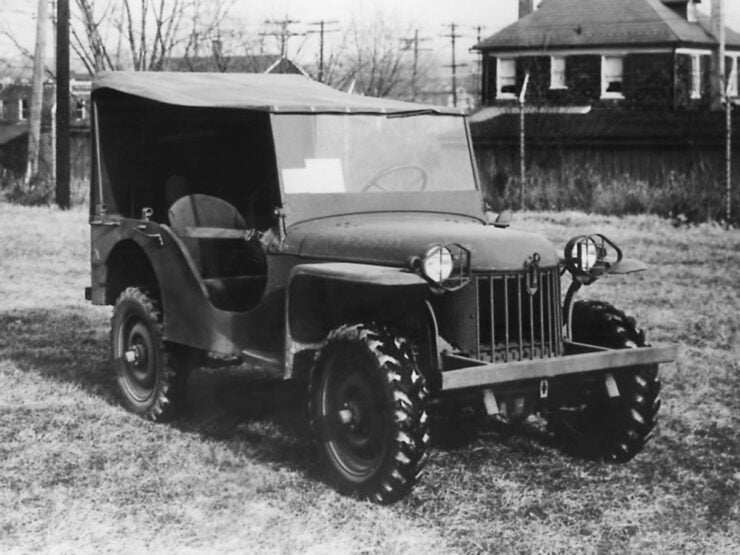

The exigencies of the war took their toll, and eventually Japan was defeated, the horrors of the Battle of Okinawa delivered the lessons which no doubt persuaded the United States that the atomic bomb would need to be used. The spectres of Hiroshima and Nagasaki then overshadowed the memory of Battle of Okinawa such that it would be largely forgotten in history.
With the defeat of Japan the Allies had learned the lessons of history and understood that the single factor that enabled the Nazis to take power in Germany had been the punitive conditions imposed under the terms of the Treaty of Versailles that brought to an end the First World War.
The Allies set about helping Japan re-build her industry and economy, and putting in place a democratic political structure to help it transform into the modern industrial nation it ultimately became: and one of the small projects the Allies gave Japan was the job of building 100 Jeeps for the new war in Korea which began in 1950.
Having geared up for the production of those 100 Jeeps for the Allied effort in the Korean war, by 1951 Toyota could see that one of the most sensible projects they could embark on would be a vehicle like the Jeep, a practical vehicle for agriculture, mining, police and military, a vehicle for people who didn’t want to be stuck with following where the road might lead, but to go where there was no path, and leave not only a trail but also a few scratches on the paintwork.
It only took until 1951 for the new Toyota BJ four-wheel-drive to enter production. It was at first referred to as a Toyota “Jeep” as that had become the generic word for vehicles of this type all around the world, but by 1955 Willys had expressed their irritation with Toyota calling it a Jeep and so Toyota’s technical director Hanji Umehara decided to emulate the Land Rover instead, and call theirs the “Land Cruiser.”
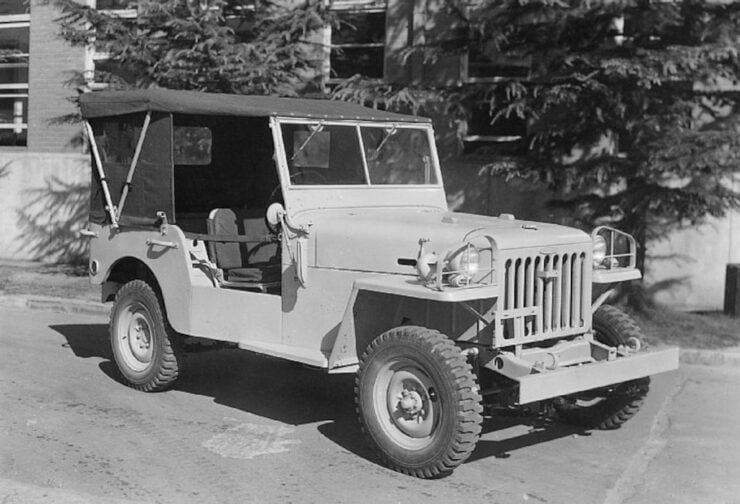

In designing their four-wheel-drive Toyota’s design team realized that it would benefit from being a bit larger than the Jeep, and they also realized that the engine of the Jeep, and the British Land Rover, were a bit anemic, so they fitted a nice big Toyota Type B 3.4 liter (3,386 cc) OHV inline six cylinder gasoline engine which delivered a healthy 84 hp at 3,600 rpm and torque of 159 lb/ft at a usefully low 1,600 rpm.
This B engine had been based on the design of the Chevrolet “Stovebolt” inline six and first produced by Toyota in 1938. Interestingly the Chevrolet “Stovebolt” was the basis for the “Blue Flame” six used in the early 1953 Chevrolet Corvette.
With that size engine with its decent low-end torque Toyota decided not to bother with the weight and complexity of a two-speed transfer case: so the vehicle only had two-wheel-drive and four-wheel-drive options. To ensure this would work out well Toyota used 4.11:1 front and rear axle ratios, and gave the vehicle a low first gear ratio of 5.53:1.
The logic of this in part was that the more simple the vehicle’s mechanical parts were the more reliable and easy to maintain it would prove to be. Durability ad ease of maintenance were to become strong selling points for the Toyota four-wheel-drives of the future. The other side was that it made the vehicle more simple to drive: most of those who would drive it had most likely not come across a two speed transfer case before so it made sense to make such a pioneering vehicle as fool-proof as possible.
Realizing that there would be naysayers who would criticize the Toyota’s lack of a high and low range gearing Toyota embarked on a bold and symbolic demonstration of the BJ’s abilities by driving it up the Shinto shrine at the top of Mount Atago, and then did another demonstration to the sixth level of Mount Fuji, a feat that settled the vehicle’s unquestionable abilities in the minds of the Japanese.
The drive up Mount Fuji was done by Ichiro Taira and closely supervised by the Japanese Police who were impressed by the vehicle’s ability. That did not immediately translate into an order however as the police were rather keen on getting American Jeeps and they’d ordered a batch of them. However the police placed their next order for 289 Toyota BJ: and the Toyota BJ became the official police four-wheel-drive in Japan.
Toyota BJ production was in full-swing by 1953 with three models on offer: the BJ-T touring model; the BJ-R radio vehicle; and the BJ-J cowl chassis which could be equipped with a special custom body for creating an ambulance or fire engine or other specialized utility vehicle.
The BJ continued in production up until 1955, at which point it was superseded by the model that would be the first to carry the name Land Cruiser, and forge the legendary reputation that went with that name.
Enter the Land Cruiser 20 Series
While the BJ was very much a “Jeep with Japanese characteristics” it needed quite a bit of refinement to make it into a vehicle that would have export appeal. In the post war years the need was for industries to “export or perish”, because the nations whose economies had been severely depleted by the war desperately needed to re-stock their national piggy banks.
The leadership at Toyota were well aware of this and understood that their Jeep-like utilitarian vehicle had the potential to be a global best seller. British car maker Rover had already discovered this with export sales of their Land Rover exceeding all expectations, and Toyota decided to get a piece of the action.
Understanding this the design and engineering team at Toyota made themselves busy turning what was essentially a military and police vehicle into something with a strong and broad market appeal.
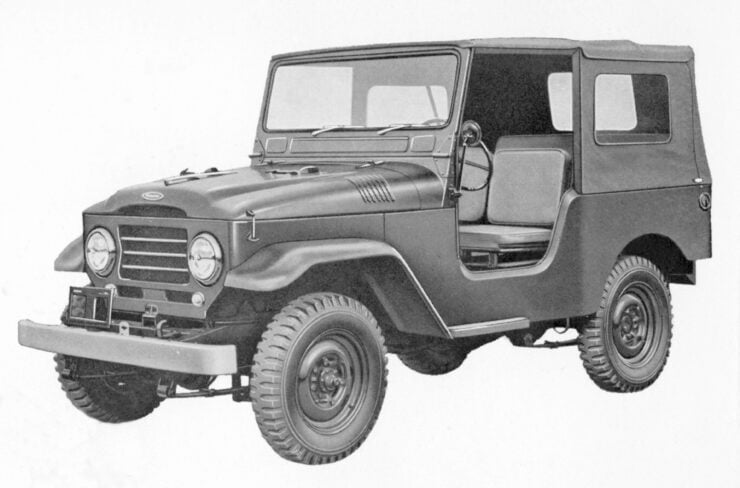

The Land Cruiser 20 Series was substantially upgraded from the BJ. It was initially made in two wheelbase lengths; a 2,285 mm wheelbase and a 2,430 mm, and in 1959 an extra long 2,650 mm wheelbase model was added.
Toyota recognized that their BJ model was a tad lacking in the front leg room department: some say that the “BJ” stands for “B engine Jeep.” But if this new Toyota was to be a viable export product then more front leg room was needed and to provide this the design team moved the engine and transmission forwards by 120 mm (4.7 in) to make decent leg room space to accommodate six foot tall people without requiring a longer vehicle.
When the 20 Series first went into production in August of 1955 it was fitted with the same Toyota B Series six cylinder OHV engine as its Toyota BJ predecessor. Then in November the 20 Series was also offered with the larger 3.9 litre (3,878 cc) Toyota F Series six cylinder engine which delivered 105 hp @3,200 rpm.
Both engines drove through a three speed manual gearbox with synchromesh on 2nd and 3rd gears. The station wagon models were fitted with steering column gear shift levers and the transfer box was operated by a pull-push lever on the dashboard. The other models had conventional gear shifts on the central transmission tunnel.
The 20 Series fitted with the Toyota B engine were designated BJ20 while those equipped with the Toyota F engine were designated FJ20.
This naming nomenclature was a system for naming specific groups of models, the left-hand drive BJ “Jeep” like model was the BJ25 for example. There were ten model numbers for the FJ20 series which differentiated various engine, wheelbase, and body options.
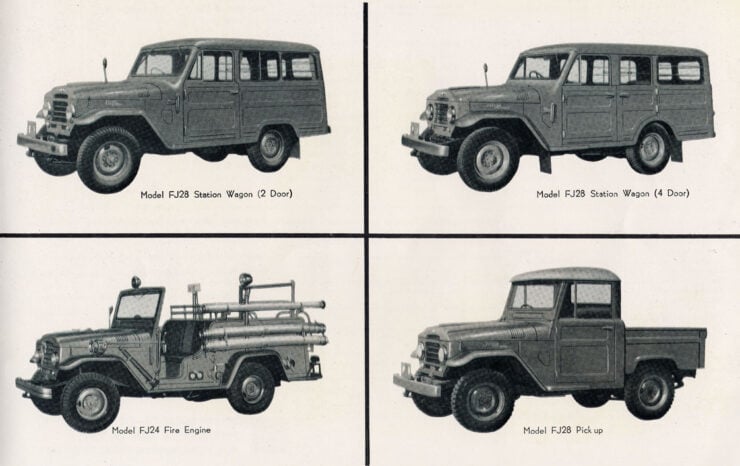

The suspension was improved with four-plate leaf springs that were longer and which had been developed for the Toyota Crown passenger car. This was to improve ride comfort and off-road flexibility. The brakes were drums all around, disc brakes at that time were a quite new thing and were typically only found on sports cars and some more expensive road going passenger cars.
The appearance of the 20 Series was something that set it apart from the Jeep and the Land Rover. Toyota created a stylish pressed steel bodywork that gave the new Land Cruiser a distinctive and attractive appearance: it was both visually attractive, yet possessing a businesslike “no-nonsense” character.
The 20 Series also pioneered the idea of a comfortable passenger station wagon style of four-wheel-drive. Land Rover had tried this when they made their Tickford station wagon during the early 1950’s but the Tickford had been killed off by the British taxation system. The Land Cruiser station wagons enabled Toyota to fill a market gap where they did not have a lot of competition.
The 20 Series was improved through its years of production leading to the 30 Series which entered production around 1957 being manufactured alongside the 20 Series. The 30 Series models were produced into the 1960’s. Probably the best known of these is the FJ34V station wagon which was exported to Australia.
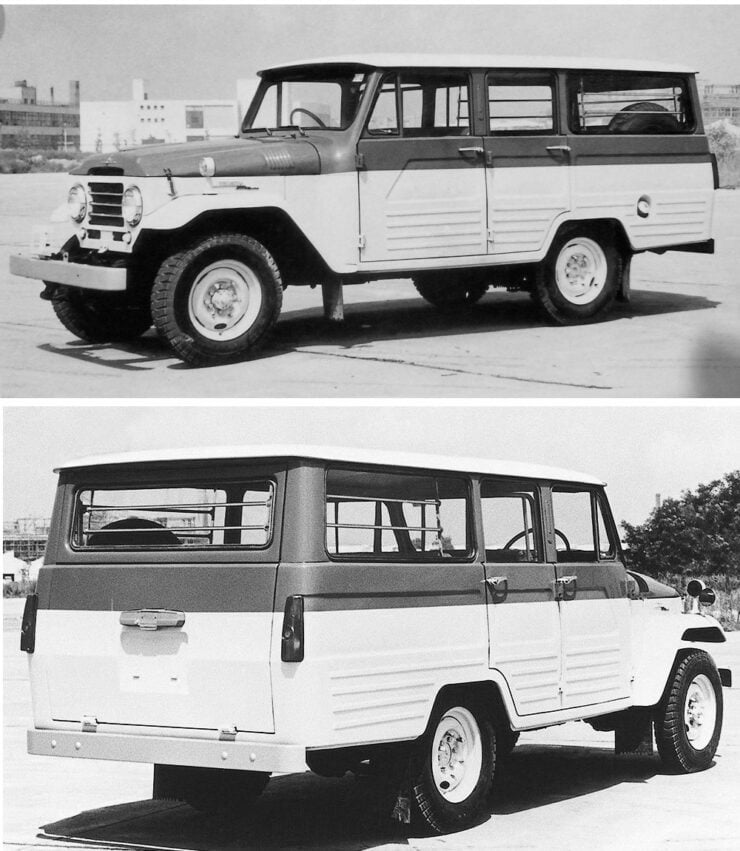

Toyota knew they were onto a world beater of a vehicle and with typical Japanese thoroughness they worked on refining the 20 Series and 30 Series with a view to keeping the design rugged, simple, and yet stylish.
The end result in 1960 was the FJ40 and BJ40, and these would become the iconic Land Cruisers around the world. With their full synchromesh gearboxes, high and low range transfer box and almost identical outward appearance to the 20/30 Series these were the Toyota vehicles that would become a global icon.
(Feature image at the head of this post courtesy Toyota).

Jon Branch has written countless official automobile Buying Guides for eBay Motors over the years, he’s also written for Hagerty, he’s a long time contributor to Silodrome and the official SSAA Magazine, and he’s the founder and senior editor of Revivaler.
Jon has done radio, television, magazine, and newspaper interviews on various issues, and has traveled extensively, having lived in Britain, Australia, China, and Hong Kong. The fastest thing he’s ever driven was a Bolwell Nagari, the slowest was a Caterpillar D9, and the most challenging was a 1950’s MAN semi-trailer with unexpected brake failure.

